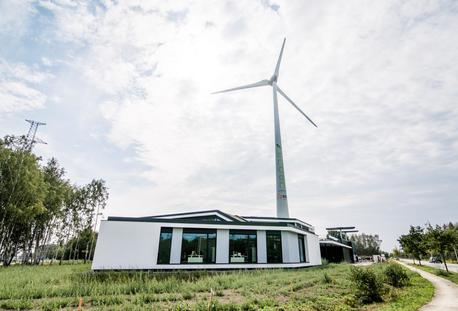
CO2 neutrality
For thousands of years, humankind barely affected our climate and habitats in any significant way. This all changed rapidly over a very short period of time—just over 150 years, spread over three industrial revolutions.
That excessive rise now has to be reduced in a fifth of the time it took us to create the problem if we are to put a stop to global warming. The fact that many companies are now taking measures to reduce their CO2 emissions is therefore not only to be welcomed but, above all, very important for the future of our planet.
Start with your footprint
No matter what the ultimate goal is, we always start with a CO2 footprint. This maps out the CO2 emissions of your company or product on 3 levels:
- Scope 1: direct emissions from sources owned or controlled by the company (e.g. combustion of fuels)
- Scope 2: indirect emissions of electricity (e.g. purchase of electricity)
- Scope 3: indirect emissions (e.g. use of materials, waste treatment, transport, etc.), both upstream and downstream activities
The resulting CO2 footprint provides a clear picture of your company's activities and the associated CO2 impact. It is one of the first steps towards active CO2 management that serves as a basis to identify and develop realistic but impactful measures.
The calculation of the footprint is based on the most widely used international standard Greenhouse Gas Protocol. This standard is used worldwide by 90% of the Fortune 500 companies.

Reduction vs. offsetting
To ensure that your company reduces its CO2 emissions, you can focus on both CO2 reduction and offsetting.
Initially, you will need to take a good look at your situation and evaluate how you can reduce your CO2 emissions. This can be done by investing in potential energy savings and by concentrating on producing your own green energy, for example, by using wind, solar or geothermal energy. By analysing your entire building and products, a number of different possibilities will emerge.
However, there are always some emissions that cannot be reduced due to necessary processes that we cannot exclude or modify; for example, air travel. For the sake of complete CO2 neutrality, offsetting CO2 is often opted for.
Offsetting is done by investing in projects that reduce emissions somewhere in the world, for example, by planting x number of trees for a reforestation project in South America to offset your flight. This allows you to select an offset project of your choice to reduce your footprint to 0. It is important to do this in the right way with the right projects.
The ultimate goal, however, remains to prevent and reduce our own emissions as much as possible and, consequently, to change our effective behaviour. Offsetting is not an end in itself but a means to reduce CO2 emissions to 0, simply because offsetting alone will not achieve a major impact on the climate.

Science-based targeting
Following the baseline measurement and a subsequent CO2 emission plan, we might naturally ask ourselves whether that plan is ambitious enough. But how can you make this assessment?
The Science Based Targets initiative (SBTi) provides an answer to this. The collaboration between the CDP, United Nations Global Compact, World Resources Institute and the WWF aims to ensure that companies consider science-based targets in their transition to a low-carbon economy. They validate the targets sent to them on a feasibility basis in relation to the objectives of the Paris Climate Change Agreement.
An entry on the Science Based Targets site will give your objective a substantiated international value that can strengthen your brand and differentiate it from the competition.



